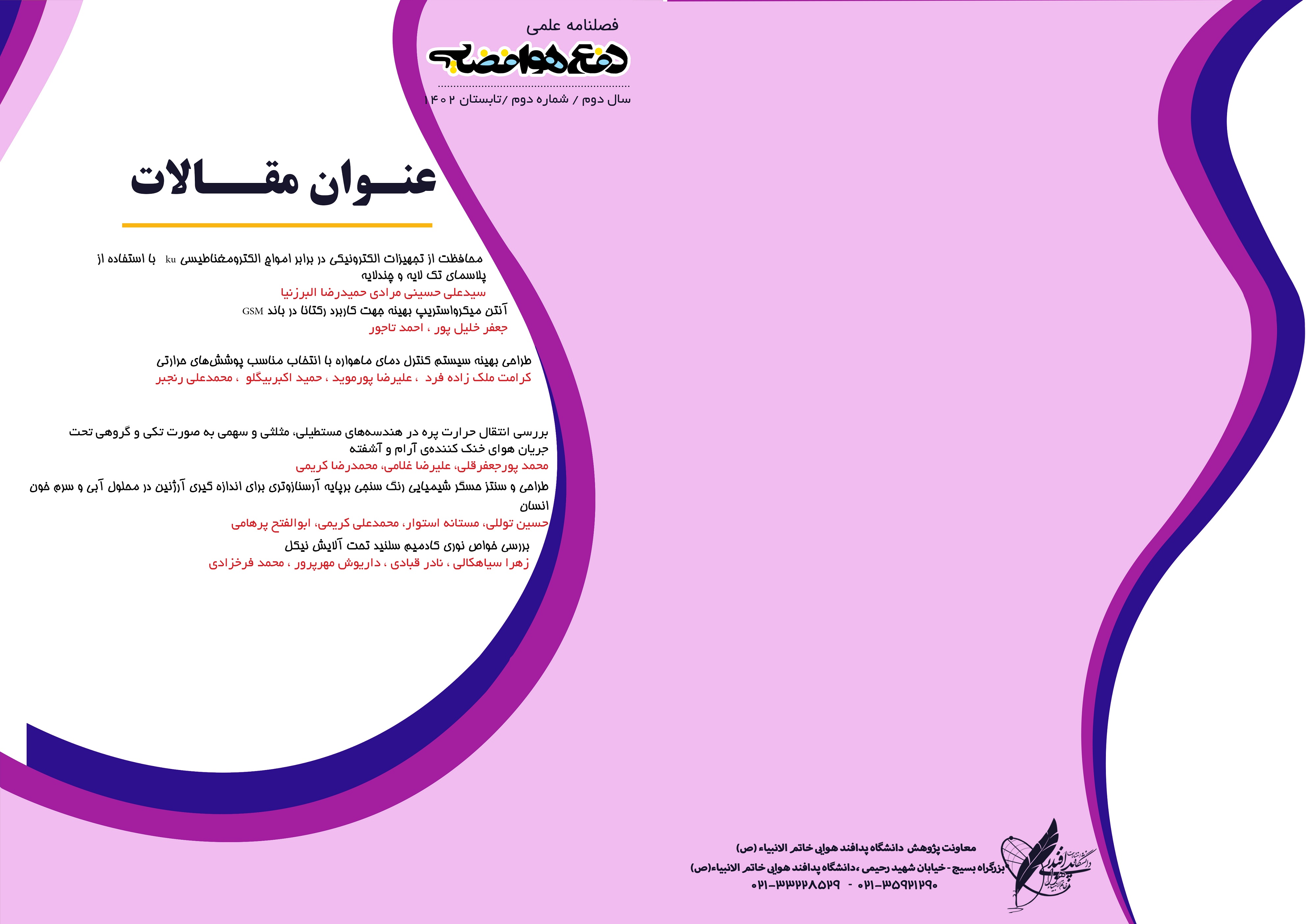نوع مقاله : مقاله پژوهشی
نویسندگان
1 استاد، مهندسی مکانیک، دانشگاه صنعتی مالک اشتر، تهران
2 استادیار، دانشکده مهندسی مکانیک، دانشگاه پدافند هوایی خاتمالانبیاء(ص)، تهران، ایران
3 کارشناسی ارشد مهندسی هوافضا، دانشگاه صنعتی مالک اشتر، تهران
4 اتوبان بسیج شهرک شهید شجاعی(قصر فیروزه1) بلوک114 طبقه 5 واحد2
چکیده
هدف اصلی از طراحی سیستم کنترل دمای یک ماهواره، تامین دمای مطلوب برای کارکرد صحیح قطعات و مجموعه ماهواره میباشد. با توجه به اینکه ماهواره شرایط سرد و گرم شدیدی در طول ماموریت خود تجربه میکند، انتخاب مواد و پوششهای سطحی برای آن مشکل میشود. طراحی صورت گرفته برای مقابله با شرایط گرم، سبب افزایش توان لازم برای گرم نگه داشتن ماهواره در شرایط سرد شده و این در حالی است که تامین توان گرمایشی مورد نیاز در شرایط سرد برای ماهواره یکی از دغدغه های مهم طراحان میباشد. با توجه به محدودیت-های موجود در سیستمهای فضایی در زمینه تامین انرژی، این توان باید بهینه و در حداقل مقدار ممکن باشد. در این مقاله ابتدا روند طراحی سیستم کنترل دما با استفاده از یک نمونه ماهواره شرح داده میشود و در ادامه با استفاده از انتخاب مناسب پوششهای حرارتی از بین پنج پوشش حرارتی که در اختیار طراح قرار دارد، طراحی بهینه صورت میگیرد. در بهینه سازی از روش برنامهریزی خطی استفاده شده و هدف از بهینه کردن نیز کاهش مقدار توان مصرفی گرمکن در شرایط سرد میباشد. نتایج حاصل از شبیهسازی نشان میدهد که دمای ماهواره در شرایط گرم و سرد در محدوده مجاز دمایی قرار میگیرد و با استفاده از این روش، کاهش قابل توجهی در مقدار توان مصرفی گرمکن ایجاد میشود.
کلیدواژهها
موضوعات
عنوان مقاله [English]
Optimal Design of Satellite Thermal Control Subsystem Using Appropriate Choice of Surface Finishes
نویسندگان [English]
- Keramat Malakzadeh Fard 1
- Alireza Pourmoayed 2
- Hamid Akbarbeyglou 3
- Mohammad Ali Ranjbar 4
1 Department of Mechanical Engineering, Malek Ashtar University, Tehran, Iran
2 Assistant professor, Department of Mechanical Engineering, Khatmol Anbia Air Defense, Tehran, Iran
3 Department of Aerospace Engineering, Malek Ashtar University of Technology, Tehran, Iran
4 Assistant Professor of Aerospace, Department of Mechanic Engineering, Khatam Ol Anbia (PBU) University, Tehran, Iran
چکیده [English]
The main design goal of thermal control subsystem is to keep the temperature of the satellite equipment within specified margins. Satellite experienced extreme hot and cold conditions during the mission, so it is difficult to choose the materials and surface coatings for these conditions. If design is done to deal with hot conditions, satellite power for keeping warm in cold conditions is increased and this is while supply of required power for heating the satellite in cold conditions is one of the important design concerns. Due to restrictions in space systems for power supply, the value of power for thermal control subsystem should be optimal. This paper describes the process of designing a thermal control subsystem of small satellites using a simple model. In the present study, the thermal design is done by using the optimal choice for the radiator cover. This design has been done in a way that the least amount of heater power is required. For this purpose, optimization and linear programming have been used. Simulation results show that satellite temperature in warm and cold conditions is in the range and this method significantly reduces the amount of required power heater.
کلیدواژهها [English]
- Thermal Control Subsystem
- Satellite
- Optimization
- Heater
- Surface Finish

